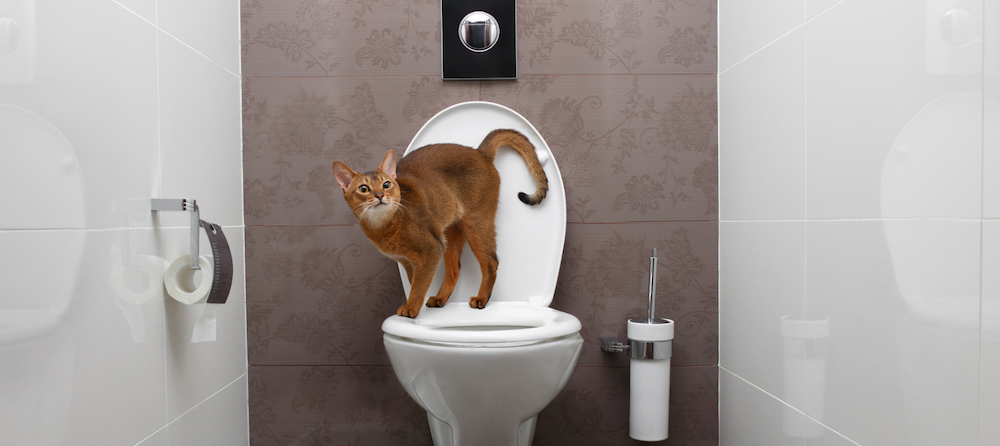Reasons Flushing Cat Poop Down Your Toilet May Cause Problems - Tips for Proper Handling
Reasons Flushing Cat Poop Down Your Toilet May Cause Problems - Tips for Proper Handling
Blog Article
The article in the next paragraphs involving Don’t flush cat feces down the toilet is rather motivating. Read it for yourself and decide what you think about it.

Introduction
As feline owners, it's vital to be mindful of just how we take care of our feline good friends' waste. While it may appear convenient to purge feline poop down the commode, this technique can have detrimental effects for both the environment and human health and wellness.
Environmental Impact
Purging feline poop presents damaging pathogens and bloodsuckers right into the supply of water, positioning a considerable danger to aquatic ecosystems. These contaminants can negatively affect marine life and compromise water high quality.
Health and wellness Risks
In addition to ecological worries, purging pet cat waste can additionally pose wellness dangers to human beings. Feline feces might include Toxoplasma gondii, a bloodsucker that can trigger toxoplasmosis-- a possibly serious health problem, particularly for expecting females and people with damaged body immune systems.
Alternatives to Flushing
Thankfully, there are much safer and much more liable methods to dispose of pet cat poop. Take into consideration the complying with options:
1. Scoop and Dispose in Trash
The most common method of dealing with pet cat poop is to scoop it into an eco-friendly bag and toss it in the trash. Make sure to use a committed litter inside story and get rid of the waste quickly.
2. Usage Biodegradable Litter
Select biodegradable pet cat trash made from materials such as corn or wheat. These trashes are eco-friendly and can be safely dealt with in the garbage.
3. Bury in the Yard
If you have a yard, think about burying feline waste in a marked location away from vegetable yards and water sources. Make sure to dig deep enough to avoid contamination of groundwater.
4. Mount a Pet Waste Disposal System
Purchase a pet waste disposal system especially developed for feline waste. These systems make use of enzymes to break down the waste, reducing odor and ecological impact.
Final thought
Liable animal possession prolongs past providing food and shelter-- it additionally entails appropriate waste management. By refraining from purging cat poop down the bathroom and opting for alternate disposal approaches, we can reduce our ecological impact and shield human health.
Why Can’t I Flush Cat Poop?
It Spreads a Parasite
Cats are frequently infected with a parasite called toxoplasma gondii. The parasite causes an infection called toxoplasmosis. It is usually harmless to cats. The parasite only uses cat poop as a host for its eggs. Otherwise, the cat’s immune system usually keeps the infection at low enough levels to maintain its own health. But it does not stop the develop of eggs. These eggs are tiny and surprisingly tough. They may survive for a year before they begin to grow. But that’s the problem.
Our wastewater system is not designed to deal with toxoplasmosis eggs. Instead, most eggs will flush from your toilet into sewers and wastewater management plants. After the sewage is treated for many other harmful things in it, it is typically released into local rivers, lakes, or oceans. Here, the toxoplasmosis eggs can find new hosts, including starfish, crabs, otters, and many other wildlife. For many, this is a significant risk to their health. Toxoplasmosis can also end up infecting water sources that are important for agriculture, which means our deer, pigs, and sheep can get infected too.
Is There Risk to Humans?
There can be a risk to human life from flushing cat poop down the toilet. If you do so, the parasites from your cat’s poop can end up in shellfish, game animals, or livestock. If this meat is then served raw or undercooked, the people who eat it can get sick.
In fact, according to the CDC, 40 million people in the United States are infected with toxoplasma gondii. They get it from exposure to infected seafood, or from some kind of cat poop contamination, like drinking from a stream that is contaminated or touching anything that has come into contact with cat poop. That includes just cleaning a cat litter box.
Most people who get infected with these parasites will not develop any symptoms. However, for pregnant women or for those with compromised immune systems, the parasite can cause severe health problems.
How to Handle Cat Poop
The best way to handle cat poop is actually to clean the box more often. The eggs that the parasite sheds will not become active until one to five days after the cat poops. That means that if you clean daily, you’re much less likely to come into direct contact with infectious eggs.
That said, always dispose of cat poop in the garbage and not down the toilet. Wash your hands before and after you clean the litter box, and bring the bag of poop right outside to your garbage bins.
https://trenchlesssolutionsusa.com/why-cant-i-flush-cat-poop/

As a devoted reader on How to Dispose of Cat Poop and Litter Without Plastic Bags, I thought sharing that excerpt was worth the trouble. Are you aware of another individual who is curious about the subject? Take a moment to share it. We appreciate reading our article about Can You Flush Cat Poop Down The Toilet?.
About Report this page